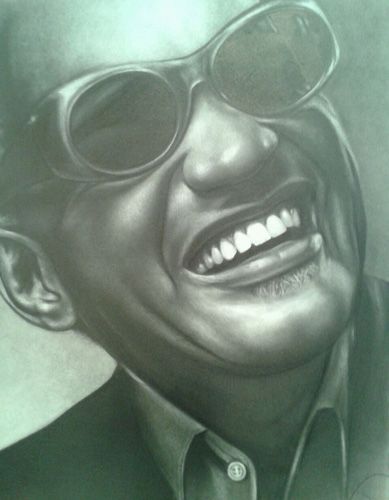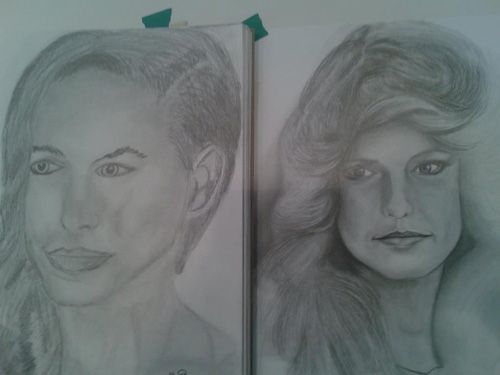Drawing Faces, Portrait Artist, Lee Hammond, How to Draw Faces, Art
I just concluded a five day workshop on portrait drawing. This is a special week, for people come from all over the country (sometimes from all over the world!), just to learn my techniques for drawing realistic portraits.
I always get such a kick out of my students’ progress, for most of them come into the studio not believing that they really can learn to draw a good face. Portraits are tricky, for there’s very little room for error when trying to capture someone’s true character. It’s one thing to draw a good face, but it’s another thing to capture someone’s likeness.
Drawing techniques in general are very repetitive. Artists can basically use the same procedure to draw anything. Those of you who have taken classes from me or have read my books, know firsthand that I use the same approach to drawing, whether it’s a face, an animal, or a tennis shoe.
Enter your email address for a free, instant download on how to draw people from photographs!
[fw-capture-inline campaign=”RCLP-confirmation-photo-reference” thanks=”Thanks for downloading!” interest=”Art” offer=”https://media2fwpublications.s3.amazonaws.com/NLS/ARNfreemiums/ArtistsNetwork__PhotoReference_2015.pdf”]

All things hinge on the five elements of shading, and the dreaded sphere exercise. You can clearly see this in every book I write. But this information, while not hugely exciting, is your answer to realism. If you can’t draw a good sphere that clearly looks like a 3-dimensional ball on a table, your chances of drawing a good face is next to none.
I took note of the most asked questions throughout this week’s class. Most of the questions were about my “Hammond Blended Pencil Technique,” and how I make the tones look so seamless. You can’t tell where one tone ends and the other begins. Most beginners have a very difficult time getting the smoothness that I achieve in my drawings. Don’t worry if this is true for you. It takes practice, practice, and more practice to hone this skill. Always remember, I’ve been doing this daily for more than 35 years. While everything about this is already there for you in my books, let me give some quick pointers here.
5 Tips For Drawing Faces
1. Practice using value scales and drawing the sphere repeatedly, so they become second nature.
2. NEVER attempt to draw portraits unless you’ve practiced drawing each of the facial features individually first. (Learn how to draw a nose and how to draw lips, practice drawing hair and drawing eyes, etc.)
3. Take your time to achieve accuracy. Speed should never be your goal.
4. When blending, go from dark to light, just like you do when drawing the value scales. Fade into the light gradually by lightening your touch. Go lengthwise into the lighter areas, following the contours. You can’t control the fade into the light areas with individual strokes going in.
5. Practice everyday to perfect the “feel” of your pencil and tortillions. This takes time, like anything else. A concert pianist still does the basic scales to keep in musical shape. And, they don’t attempt a sonata too soon. Chop Sticks comes first!
6. Love your subject matter! If you’re drawing something that you aren’t emotionally connected to, or a face you don’t like, your art will reflect that. Draw something that makes you smile.

Look at what great work one of my art students did in just a few days. The “before and afters” always crack me up a bit, for the students come in with them believing they are pretty darn good. I love the look on their faces when they surpass even their own expectations. I never tire of seeing someone smile at their own abilities, especially when they’ve doubted themselves.
I hope some of you will consider taking a class from me in the future. I always list them on this web site and on Facebook. While reading my books is a great beginning, and watching my DVDs is a good way to make the books make more sense, there’s nothing like being with me and watching me draw. Then, I can really show you the tricks that don’t come across in media. I guarantee you will not be disappointed.
Practice, practice, practice!!! You’ll be surprised how it all will add up, and improve your work!
Have a great week my artistic friends!
Lee
Lee Hammond has been called the Queen of Drawing. That may not be fair these days, since in addition to providing the best drawing lessons, she has also created fantastic books and videos filled with the same easy to follow acrylic painting techniques, colored pencil techniques and more. Click here to see all of the instructional books and DVDs that Lee Hammond has to offer!
• Free download! Easy Acrylic Painting Techniques by Lee Hammond















![Toni Kroos là ai? [ sự thật về tiểu sử đầy đủ Toni Kroos ]](https://evbn.org/wp-content/uploads/New-Project-6635-1671934592.jpg)


